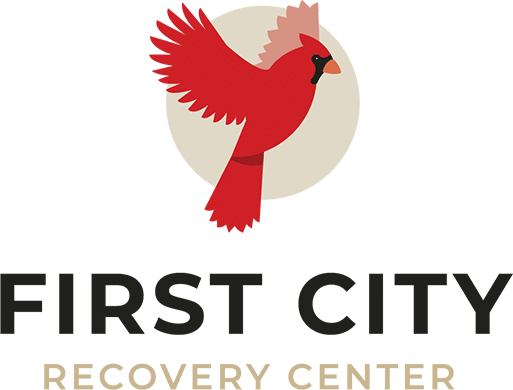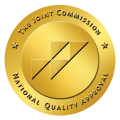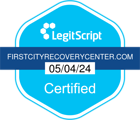Warning Signs of Alcohol Abuse
Alcohol consumption is a common social activity, but it can quickly escalate into a serious problem if not kept in check. Alcohol abuse affects millions of people worldwide and can have devastating effects on one’s health, relationships, and overall quality of life.
This guide aims to shed light on the warning signs of alcohol abuse, the different levels of alcohol misuse, how to recognize alcoholism, the dangers involved, and when to seek treatment.Recognizing the early signs of alcohol abuse is crucial in preventing long-term consequences.
Table of Contents
Toggle20 Warning Signs of Alcohol Abus
Here are 20 warning signs that may indicate someone is struggling with alcohol abuse, along with a deeper look into each sign:
- Increased Tolerance: Needing to drink more alcohol to achieve the same effect is a significant red flag. This can lead to higher consumption levels over time, increasing the risk of dependency and health issues.
- Memory Blackouts: Frequently experiencing memory lapses or blackouts after drinking is a clear indicator of excessive alcohol consumption. This can be dangerous, leading to risky behaviors and a lack of awareness about one’s actions.
- Neglecting Responsibilities: Failing to fulfill obligations at work, school, or home due to drinking can have far-reaching consequences. This often leads to poor performance, disciplinary actions, and damaged relationships.
- Drinking Alone: Consuming alcohol alone or in secret suggests that the individual may be using alcohol to cope with stress or emotions rather than for enjoyment. This behavior can quickly escalate into a more serious problem.
- Loss of Control: Being unable to limit the amount of alcohol consumed, even when intending to have just one or two drinks, indicates a loss of control over drinking habits. This can lead to binge drinking and other harmful patterns.
- Preoccupation with Drinking: Spending a lot of time thinking about drinking or planning when to drink next can dominate a person’s thoughts and daily activities. This obsession often interferes with normal routines and priorities.
- Withdrawal Symptoms: Experiencing physical symptoms like shaking, sweating, or nausea when not drinking is a sign of physical dependence on alcohol. These withdrawal symptoms can be severe and dangerous if not managed properly.
- Relationship Issues: Having frequent arguments or problems in relationships due to drinking can lead to isolation and emotional distress. Alcohol abuse often strains relationships with family, friends, and colleagues.
- Risky Behavior: Engaging in risky behaviors such as drunk driving, unprotected sex, or getting into physical altercations while under the influence of alcohol increases the likelihood of accidents, injuries, and legal troubles.
- Neglecting Self-Care: Ignoring personal hygiene, diet, or health can result in a noticeable decline in physical appearance and overall well-being. This neglect is often a sign that alcohol has taken precedence over self-care.
- Changes in Appearance: Noticeable changes in appearance, such as weight loss, a disheveled look, or bloodshot eyes, can indicate chronic alcohol abuse. These physical signs often reflect the toll alcohol takes on the body.
- Legal Problems: Having run-ins with the law due to drinking, such as DUIs, public intoxication, or disorderly conduct, can have serious legal and financial repercussions. These incidents are clear indicators of problematic drinking behavior.
- Lying About Drinking: Lying or being defensive about drinking habits often suggests that the individual is aware of their problem but is not ready to confront it. This dishonesty can erode trust and damage relationships.
- Financial Issues: Spending excessive amounts of money on alcohol can lead to financial instability and debt. This financial strain can compound the stress and anxiety that often accompany alcohol abuse.
- Loss of Interest: Losing interest in activities or hobbies that were once enjoyable is a common sign of alcohol abuse. This loss of interest often stems from the prioritization of drinking over other aspects of life.
- Depression and Anxiety: Experiencing increased feelings of depression or anxiety can be both a cause and a consequence of alcohol abuse. Drinking may initially seem to alleviate these feelings but ultimately exacerbates them.
- Isolation: Withdrawing from family and friends is a common behavior among those struggling with alcohol abuse. This isolation can lead to loneliness and further reliance on alcohol as a coping mechanism.
- Drinking to Cope: Using alcohol to deal with stress, emotional issues, or traumatic experiences is a dangerous habit. This form of self-medication can prevent individuals from seeking healthier, more effective forms of support and treatment.
- Persistent Drinking: Continuing to drink despite negative consequences, such as health problems, relationship issues, or work-related difficulties, indicates a serious problem. This persistence shows that alcohol has become a dominant force in the individual’s life.
- Physical Health Problems: Developing health issues such as liver disease, high blood pressure, or digestive problems due to alcohol consumption is a clear sign of long-term abuse. These health problems often require medical intervention and can be life-threatening if ignored.
A Closer Examination of Warning Signs
 Understanding these warning signs in more depth can help in identifying and addressing alcohol abuse early. Increased tolerance and memory blackouts suggest that the body and mind are becoming accustomed to high levels of alcohol, which can lead to physical dependence. Neglecting responsibilities and drinking alone indicate that alcohol is interfering with daily life and emotional well-being.
Understanding these warning signs in more depth can help in identifying and addressing alcohol abuse early. Increased tolerance and memory blackouts suggest that the body and mind are becoming accustomed to high levels of alcohol, which can lead to physical dependence. Neglecting responsibilities and drinking alone indicate that alcohol is interfering with daily life and emotional well-being.
The loss of control and preoccupation with drinking demonstrate how alcohol can become a central focus, often to the detriment of other important activities and relationships. Withdrawal symptoms signify a physical dependence that requires medical attention to manage safely.
Relationship issues and risky behavior highlight the social and behavioral impacts of alcohol abuse, while neglecting self-care and changes in appearance reflect the physical toll it takes on the body. Legal problems and lying about drinking reveal the external consequences and internal denial often associated with alcohol abuse.
Financial issues and loss of interest in previously enjoyed activities underscore the broad impact of alcohol on personal and financial well-being. Depression, anxiety, and isolation show the mental health challenges that often accompany alcohol abuse, creating a vicious cycle that can be hard to break.
Drinking to cope and persistent drinking despite negative consequences indicate a deep-seated reliance on alcohol that requires professional intervention. Finally, physical health problems point to the long-term damage that alcohol can inflict on the body, underscoring the importance of addressing the issue early.
Different Levels of Alcohol Abuse
Alcohol abuse can manifest in different forms and severity levels. Understanding these levels can help in identifying the stage of abuse and seeking appropriate help.
- Social Drinking: This is occasional drinking that doesn’t interfere with one’s life. However, it can be a precursor to more serious abuse.
- Problem Drinking: At this stage, drinking begins to cause problems in one’s life, such as arguments with loved ones or poor performance at work.
- Binge Drinking: Consuming large amounts of alcohol in a short period, leading to immediate risks such as accidents or alcohol poisoning.
- Heavy Drinking: Regularly consuming a large amount of alcohol, leading to health problems and dependency.
- Alcohol Dependence: Developing a physical and psychological need for alcohol, with withdrawal symptoms when not drinking.
- Alcoholism: The most severe form, where drinking dominates one’s life, leading to significant health, social, and legal problems.
Recognizing Alcoholism
Alcoholism, or alcohol use disorder (AUD), is a chronic disease characterized by an inability to stop or control alcohol use despite adverse social, occupational, or health consequences. Recognizing alcoholism involves understanding the behavioral and physical signs, as well as the psychological impact.
Behavioral Signs
- Compulsive Drinking: A strong urge to drink, often accompanied by loss of control.
- Neglecting Duties: Ignoring responsibilities at work, home, or school.
- Continued Use Despite Problems: Persisting in drinking even when it causes significant issues.
- Loss of Interest: Abandoning activities once enjoyed.
- Isolation: Withdrawing from social interactions and activities.
Physical Signs
- Withdrawal Symptoms: Experiencing symptoms like sweating, shaking, or nausea when not drinking.
- Tolerance: Needing more alcohol to feel the same effects.
- Health Issues: Developing problems such as liver disease, heart problems, or digestive issues.
Psychological Impact
- Mood Swings: Frequent changes in mood, including irritability and anger.
- Depression and Anxiety: Increased feelings of sadness or anxiousness.
- Mental Health Decline: Deterioration in cognitive functions, such as memory and decision-making.
The Dangers of Alcohol Abuse
The dangers of alcohol abuse are extensive and can affect every aspect of a person’s life. Understanding these dangers underscores the importance of recognizing and addressing alcohol abuse early.
Health Risks
- Liver Disease: Chronic alcohol abuse can lead to liver conditions such as fatty liver, hepatitis, and cirrhosis.
- Cardiovascular Issues: Increased risk of high blood pressure, heart disease, and stroke.
- Cancer: Higher risk of developing cancers of the mouth, throat, esophagus, liver, and breast.
- Neurological Damage: Long-term abuse can lead to brain damage, affecting memory and cognitive function.
Social and Psychological Risks
- Relationship Breakdown: Alcohol abuse often leads to strained or broken relationships with family and friends.
- Mental Health Disorders: Increased likelihood of developing disorders like depression and anxiety.
- Isolation: Social withdrawal and isolation from loved ones.
Legal and Financial Risks
- Legal Problems: Issues such as DUIs, public intoxication, and other legal troubles.
- Financial Strain: Spending excessive money on alcohol, leading to financial instability.
Immediate Risks
- Accidents and Injuries: Higher risk of accidents, falls, and injuries.
- Alcohol Poisoning: Consuming a large amount of alcohol in a short period can lead to alcohol poisoning, which can be fatal.
When to Seek Treatment

Recognizing when to seek treatment for alcohol abuse is crucial in preventing further damage. Here are some indicators that it might be time to seek help:
- Inability to Stop: Being unable to stop drinking despite wanting to.
- Persistent Cravings: Experiencing strong cravings or urges to drink.
- Negative Impact on Life: Noticing a significant negative impact on health, relationships, or daily functioning due to drinking.
- Withdrawal Symptoms: Experiencing withdrawal symptoms when not drinking.
- Failed Attempts to Quit: Having tried to quit drinking multiple times without success.
Types of Treatment
- Detoxification: The first step in many treatment programs, involving medical supervision to manage withdrawal symptoms.
- Rehabilitation Programs: Inpatient programs or outpatient programs that provide comprehensive treatment, including therapy and support groups.
- Therapy: Individual or group therapy to address underlying issues and develop coping strategies.
- Medication: Medications prescribed to reduce cravings and manage withdrawal symptoms.
- Support Groups: Groups like Alcoholics Anonymous (AA) that provide peer support and accountability.
Steps to Take
- Acknowledge the Problem: Recognizing and admitting the issue is the first crucial step.
- Reach Out for Help: Contact healthcare professionals, support groups, or treatment centers for guidance.
- Develop a Support System: Engage family and friends in the recovery process for support and encouragement.
- Follow a Treatment Plan: Adhere to the prescribed treatment plan, including attending therapy sessions and support groups.
- Focus on Recovery: Commit to the recovery process, understanding that it is a long-term commitment.
How To Seek Help For Alcohol Abuse
Alcohol abuse is a serious issue that can have devastating effects on an individual’s health, relationships, and overall well-being. Recognizing the warning signs and understanding the different levels of alcohol abuse can help in taking the necessary steps toward recovery.
Professional guidance is crucial in evaluating and treating addiction effectively. You are not alone, First City Recovery Center is available to support you on your journey to a healthier and happier life! Contact us today to begin your journey to lifelong sobriety.

MD, Psychiatrist
Dr. Vahid Osman, MD is a psychiatry specialist in Indianapolis, IN.
Dr. Osman completed a residency at Austin State Hospital. He has over 32 years of experience in Psychiatry & Behavioral Health. He is board certified by the American Board of Psychiatry and Neurology.




